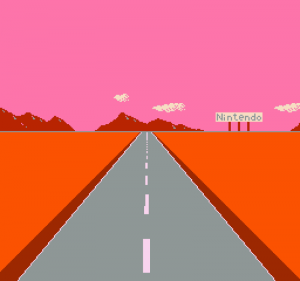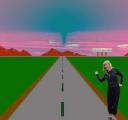
iMAL Center for Digital Cultures and Technology is proud to present Holy Fire. Art of the Digital Age a collective exhibition featuring a unique panel of digital artworks created in the last years by internationally known new media artists, and coming from galleries and collections from around the world (USA, Europe, Russia). Holy Fire is an attempt to explore how new media art, bypassing all the stereotypes connected with its presumed immateriality and difficulties of maintenance, was able to enter the art market.
Holy Fire is, in fact, featured into the “Off Program” of Art Brussels, the international contemporary art fair (April 18 - 21, 2008). Taking its cue from this occasion, the exhibition wants to show that new media art is just art of this century, wants to reduce the gap between digital art and contemporary art, and to participate in a broader understanding and acceptance of digital media and cultures.
Art of our Time
The artworks in Holy Fire are not new media art, but simply art of our time: art which appropriates institutional or corporate identities, creates fictional ones, hacks softwares and game engines for its own purposes, infiltrates online or offline communities in order to portray them or their own myths, subverts existing tools or creates its own ones, explores the aesthetics of computation and information spaces; or, more simply, uses computer hardware and software in order to create art which talks about our world.
With the accelerated technological development (e.g. large flat screens, powerful beamers, ubiquitous computing, fast network) and the sociological and cultural acceptance of digital tools and media, new media art is becoming one of the main currents of 21th century art, looking at its own nexus to our techno-environment as a strength (not deafness), and is entering into our everyday life in our office, in public or corporate buildings as well as in our home
Collectible Artworks
Holy Fire is probably the first exhibition to show only collectible new media artworks already on the art market, in the form of traditional media (prints, videos, sculptures) or customized new media objects. Holy Fire presents contemporary artworks made with comtemporary technologies and designed to be collectible.
New Economy for Autonomy
The art market offers new sources of income for new media artists. Up to now, these have been limited – when they exist – to public funding from institutions and governments, sometimes dictated by politics. An art market can help develop a new economy through direct relations between artists and art consumers, confirming the artists’ social role and the support of the people who are increasingly looking for something different from mass-produced digital gadgets.
iMAL Center for Digital Cultures and Technology is proud to present Holy Fire. Art of the Digital Age a collective exhibition featuring a unique panel of digital artworks created in the last years by internationally known new media artists, and coming from galleries and collections from around the world (USA, Europe, Russia). Holy Fire is an attempt to explore how new media art, bypassing all the stereotypes connected with its presumed immateriality and difficulties of maintenance, was able to enter the art market.
Holy Fire is, in fact, featured into the “Off Program” of Art Brussels, the international contemporary art fair (April 18 - 21, 2008). Taking its cue from this occasion, the exhibition wants to show that new media art is just art of this century, wants to reduce the gap between digital art and contemporary art, and to participate in a broader understanding and acceptance of digital media and cultures.
Art of our Time
The artworks in Holy Fire are not new media art, but simply art of our time: art which appropriates institutional or corporate identities, creates fictional ones, hacks softwares and game engines for its own purposes, infiltrates online or offline communities in order to portray them or their own myths, subverts existing tools or creates its own ones, explores the aesthetics of computation and information spaces; or, more simply, uses computer hardware and software in order to create art which talks about our world.
With the accelerated technological development (e.g. large flat screens, powerful beamers, ubiquitous computing, fast network) and the sociological and cultural acceptance of digital tools and media, new media art is becoming one of the main currents of 21th century art, looking at its own nexus to our techno-environment as a strength (not deafness), and is entering into our everyday life in our office, in public or corporate buildings as well as in our home
Collectible Artworks
Holy Fire is probably the first exhibition to show only collectible new media artworks already on the art market, in the form of traditional media (prints, videos, sculptures) or customized new media objects. Holy Fire presents contemporary artworks made with comtemporary technologies and designed to be collectible.
New Economy for Autonomy
The art market offers new sources of income for new media artists. Up to now, these have been limited – when they exist – to public funding from institutions and governments, sometimes dictated by politics. An art market can help develop a new economy through direct relations between artists and art consumers, confirming the artists’ social role and the support of the people who are increasingly looking for something different from mass-produced digital gadgets.
http://www.imal.org/HolyFire/en/
http://leewells.orgJAPANESE-D
http://leewells.org JAPANESE-DRIVING-GAME2
JAPANESE-DRIVING-GAME2